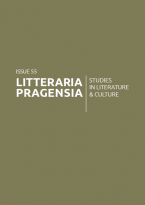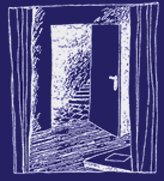
|
28.55 Irish-Language and Scottish Gaelic Literatures: A Global ContextEdited by: Radvan Markus & Petra Johana Poncarová Volume: 28 Issue: 55 July 2018, published 21 August 2018 |
Contents
|
Radvan Markus
,
Petra Johana Poncarová
Introduction
|
1 |
|
Daniela Theinová
"Who Owns the Game": The Gallery Press and Poetry in Irish Now
show abstract
Although it is a major phenomenon on the contemporary international scene, ‘Irish poetry' remains an essentially plural concept that defies easy classification. One of the most prominent fissures runs between the two main languages of Irish poetry, i.e., English and Irish, and their respective literary traditions. While they have mostly been considered independently, there are various ways in which the two language productions interact. This article explores both sides of the language divide and addresses one of the most defining, but also the most controversial features of the linguistic relationship: poetic translation from Irish into English. It focuses on two recent translation projects, published by The Gallery Press, in order to see how the approach to translation and dual-language publication has developed against a backdrop of the increasingly diversified, internationalist outlook of poetry in English and Irish. The two volumes in question are bilingual selections of poetry by Aifric Mac Aodha and Ailbhe Ní Ghearbhuigh who both demonstrate an open stance to translation. They thus challenge the common view of translation as subservient to the original and complicate the question of where, and with whom, the original lies.
|
11 |
|
Justin Quinn
Paul Muldoon and the Irish Language
show abstract
This article examines the connections between the poetry of Paul Muldoon and the Irish language, and more generally Irish culture. For a poet who is often characterized as being of the globalized moment, he has maintained a long and vibrant connection both with poetry in Irish (through translation) and indeed through writing occasional poems in that language, most recently in Rising to the Rising (2016). More generally, his work provokes questions about nationalism, transnationalism and global culture, that we have yet to accommodate properly within our criticism.
|
30 |
|
Martin Světlík
Distant Countries: Ó Conaire, Hamsun and Exile
show abstract
Pádraig Ó Conaire's interest in contemporaneous developments in European literatures is well-known. While there is not enough evidence to decide about direct influence, it is very likely that he knew and read the seminal work of Norwegian early Modernism, Knut Hamsun's Sult (Hunger), and that it influenced his own novel Deoraíocht, which is widely regarded as one of the most important novels in the Irish language. This article discusses various parallels between the two works, introducing new contexts for both of them.
|
43 |
|
Radvan Markus
The Carnivalesque Against Entropy: Máirtín Ó Cadhain's Cré Na Cille
show abstract
Taking the omnipresence of grotesque humour in Máirtín Ó Cadhain's Cré na Cille as the point of departure, this article explores the grotesque in the author's work. In so doing, it follows the theoretical framework set by the Russian theorist Mikhail Bakhtin. According to Bakhtin, the grotesque (or the carnivalesque as he tends to call it) is intrinsically connected to the natural cycle - it lowers its objects to the level of the earth that can be simultaneously a place of death and regeneration. This cycle - in nature, human life as well as culture - is one of Ó Cadhain's prime themes. Frequently in his oeuvre, however, he expresses the anxiety that it will bring deterioration instead of improvement, or that it will entirely come to a halt. In Cré na Cille, this anxiety, expressed by the voice of Stoc na Cille (the trumpet of the graveyard), is counterbalanced by the carnivalesque talk of the buried characters. Even the frequent verbal fights among the corpses delay the workings of entropy and bring a degree of ‘life' into the cemetery. The carnivalesque can be regarded as relatively successful in Cré na Cille - in the last two interludes, the trumpet loses much of its ‘divine' authority and becomes just one voice among others. Ultimately, the discussion of the carnivalesque helps to locate the novel in the context of European literature.
|
56 |
|
Petra Johana Poncarová
An Druim bho Thuath: Tormod Caimbeul's Last Vista of Gaelic Scotland
show abstract
While acknowledged as one of the greatest Gaelic prose writers, Tormod Caimbeul is virtually unknown outside Gaelic Scotland, a situation caused by the fact that none of his works have been translated into English or any other language so far, and even in his own tradition, he has received very little critical attention. This article focuses on his last published novel An Druim bho Thuath (The North Ridge, 2011), and discusses it in relation to his previous two novels, all of which present a highly original vista of a specific version of Gaelic Scotland at a certain point in the twentieth century. The article completes a triptych of the first dedicated studies of all three novels by Tormod Caimbeul.
|
70 |
|
Silke Stroh
Migration, Multiculture and Mirroring: Gaelic / South Asian Outreach in Iain Crichton Smith's "An Duine Dubh" and "The Exiles"
show abstract
Among the manifold connections between Scottish Gaelic literature and the wider world, issues of migration have played an important role for centuries; but for a long time, engagement with such issues was focused on Scottish migrations, for instance migrations of Scottish Highlanders to Lowland cities or overseas. During the second half of the twentieth century, however, Gaelic literature also began to respond to the increasing diversification of Scottish society through immigration from outside Europe, for instance from South Asia. At times, this also entails new perspectives on the Gaels' own status within Scotland, which can now be seen as part of a much larger multicultural tapestry. This article provides a case study of two early short stories on this theme, Iain Crichton Smith's "An Duine Dubh" ("The Black Man") and "The Exiles." As variations on the same theme and plot, both narrate interactions between a diasporic Gael in the Lowlands and a diasporic South Asian pedlar. Despite a clear sense of difference, the stories also develop tentative connections between the protagonists, based on shared predicaments of exile. The article concludes by comparing these stories to babs nicgriogair's more recent poems "An Gàidheal / The Pakistani" and "An Duine Dubh / The Highlander," which construct similar alignments.
|
82 |
|
Máirín Nic Eoin
"We Are No Longer Gaels": War and Conflict in Modern and Contemporary Irish-Language Poetry
show abstract
This article examines a body of poetry by modern and contemporary writers in Irish that addresses issues of war and international conflict. Drawing on the insights of Jahan Ramazani in his discussion of modern elegy, and citing a recent article by David Wheatley on contemporary war and the non-combatant poet, the article examines some of the strategies employed by Irish-language poets to address the ethical and aesthetic challenges of representing political violence and injustice. The article commences with poetic responses to the Second World War, then discusses poems motivated by the Vietnam War, and concludes with a consideration of works published since the early 1990s, a period during which poetry about war has emerged as a significant sub-genre in Irish-language writing. It argues that the best poems on the subject of violent conflict are those that address what Wheatley identifies as "the shortfall between artistic and actual justice." Poets whose work is discussed include Máirtín Ó Direáin, Eoghan Ó Tuairisc, Máire Mhac an tSaoi, Caitlín Maude, Louis de Paor and Biddy Jenkinson.
|
97 |


